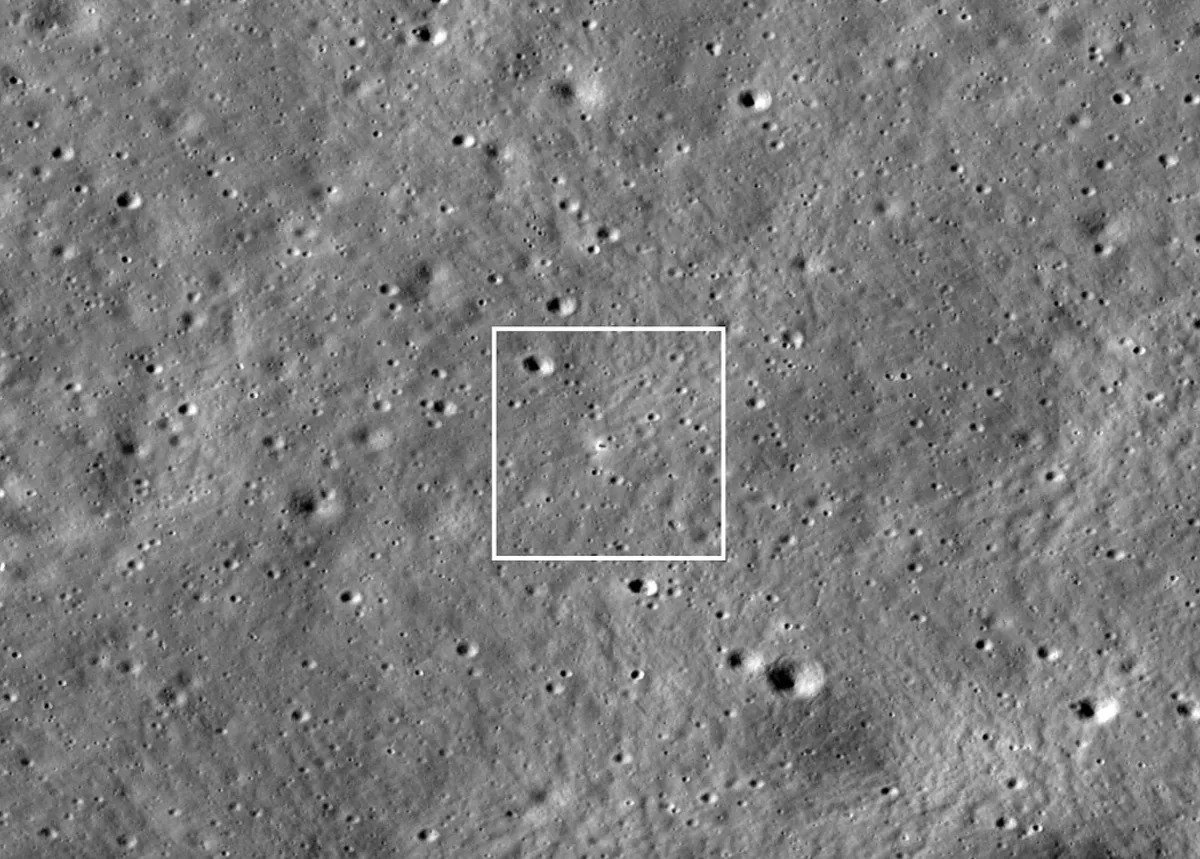NASA’s orbital vehicle has created a small surface object located on the new Vikram lander of the Indian Chandrayaan-3 mission. A halo of dust can be seen around it, which has risen under the action of a jet stream.

Chandrayaan-3 on the surface of the Moon
The NASA Lunar Reconnaissance Orbiter (LRO) spacecraft has been operating in lunar orbit for several years. During this time, it has captured the entire surface of our moon many times and it is actively used to photograph everything that people are trying to land on it. For example, it recently captured what was left of the Russian Luna-25.
On August 27, LRO took a picture of the lunar surface, which showed the Vikram lander of the Indian Chandrayaan-3 mission. It, like the Luna-25, landed before that, but unlike the Russian spacecraft, it was successful.
The photo was published only on September 5. The rectangular shadow of the lander is clearly visible on it, it is obvious that it stands flat and is not damaged. And a bright halo is visible around it. This is the dust that was raised by the jets of the spacecraft during landing and which did not have time to settle.
Chandrayaan-3 history
From a technical point of view, the Chandrayaan-3 mission is a repeat of India’s previous attempt to reach the Moon. A few years ago, it ended in failure. But this time everything happened properly. The spacecraft landed, photographed the surface and launched the Pragyan rover.
It also traveled around the Moon for several days, exploring it. But then the night came (it lasts more than two weeks on our moon), and Pragyan had to “fall asleep”. Scientists hope that on September 22, with the onset of the day, it will be able to “wake up”, although in principle it is not designed for this.
Vikram landed near the south pole of the Moon. This region is considered extremely promising because there are hidden reserves of water ice, and it is there that China and the United States are going to build their bases. That is why so much attention has been devoted to the study of these areas in recent years.
According to www.space.com
Follow us on Twitter to get the most interesting space news in time
https://twitter.com/ust_magazine
